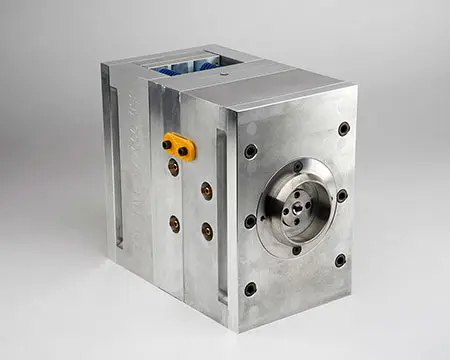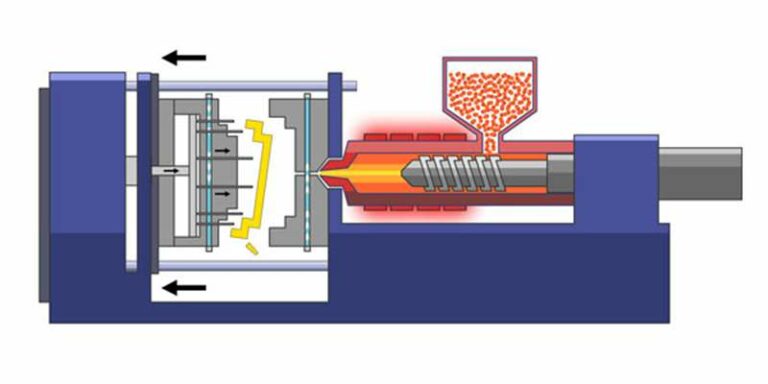Why Plastic Injection Molding Is Necessary for Precision and Durability
Why Plastic Injection Molding Is Necessary for Precision and Durability
Blog Article
The Future of Plastic Injection Molding: Trends and Advancements to Watch
As the plastic injection molding market progresses, a number of crucial fads are arising that pledge to reshape its landscape. Automation and clever manufacturing methods are set to enhance performance, while the shift towards lasting materials shows a growing environmental consciousness.
Automation and Smart Production
As the plastic shot molding sector advances, automation and smart production are taking spotlight, changing production processes - Plastic Injection Molding. The integration of sophisticated technologies such as robotics, IoT (Internet of Things), and artificial intelligence is enabling manufacturers to boost efficiency, reduce operational costs, and improve item high quality. Automated systems simplify operations, reducing manual treatment and enhancing throughput, which is important in fulfilling the climbing need for fast production cycles
Smart making innovations help with real-time surveillance and data analysis, enabling business to optimize device performance and predict upkeep demands. This aggressive approach not just minimizes downtime but likewise expands the life-span of devices. Moreover, using collaborative robots, or cobots, enhances the adaptability of manufacturing lines, making it possible for makers and workers to run side by side safely and efficiently.
The adoption of automation in plastic shot molding is not merely a fad however a strategic crucial for businesses aiming to continue to be competitive in a global market. By utilizing these innovations, suppliers can achieve higher precision, decrease waste, and adapt promptly to altering consumer demands, positioning themselves for sustainable development in an increasingly automatic future.
Sustainable Products and Practices
The push in the direction of automation and smart manufacturing has paved the method for a higher emphasis on sustainable materials and techniques within the plastic injection molding market. Business are significantly looking for environment-friendly alternatives to conventional petroleum-based plastics, leading to the fostering of bio-based and recycled products. These sustainable products not just minimize environmental effect but also line up with consumer need for greener products.
Moreover, cooperation in between suppliers, material distributors, and ecological companies is promoting technology in the growth of sustainable materials that satisfy performance criteria without endangering top quality. As guidelines around plastic use come to be stricter, the sector is poised to adjust by accepting these sustainable methods, making certain long-lasting practicality and lowering reliance on non-renewable sources. The integration of sustainability right into plastic injection molding is not just a fad; it is coming to be a necessary element of business obligation and functional quality.
Breakthroughs in 3D Printing
Current improvements in 3D printing modern technology are considerably transforming the landscape of plastic shot molding. The combination of additive manufacturing processes permits the rapid prototyping of intricate geometries that were once tough or difficult to achieve with typical methods - Plastic Injection Molding. This capacity not only accelerates item development cycles however also minimizes material waste, lining up with the growing need for sustainable production practices
In addition, the introduction of crossbreed production techniques, which integrate 3D printing and shot molding, uses producers the capacity to create complex designs while maintaining the performance of automation. This strategy enables the manufacturing of tailored parts tailored to certain consumer requirements without sacrificing the speed and scalability that injection molding supplies.
In addition, improvements in products, such as high-performance polymers and composites particularly created for 3D printing, are improving the functional capabilities of printed components. These products can stand up to better stress and anxiety and exhibit improved thermal buildings, making them ideal for even more demanding applications.
As 3D printing continues to evolve, its integration right into plastic shot molding processes guarantees to enhance productivity, lower costs, and foster innovation in product style, positioning manufacturers to better fulfill the obstacles of an open market.
Data Analytics and IoT Assimilation
Information analytics and the combination of the Internet of Points (IoT) are transforming plastic injection molding by providing makers with unmatched understandings into their operations. By leveraging real-time information gathered from interconnected machines and sensing units, producers can check efficiency metrics, recognize inadequacies, and enhance manufacturing processes. This data-driven technique facilitates predictive upkeep, lowering downtime and prolonging devices lifespan.
Furthermore, IoT assimilation permits boosted quality assurance. By constantly tracking variables such as pressure, temperature level, and cycle times, makers can quickly find variances from developed specifications and make changes in actual time. This not just boosts product consistency yet likewise reduces waste and scrap rates.
The combination of data analytics and IoT innovations also equips producers to embrace even more agile production approaches. With access to detailed data analytics, organizations can reply to market demands with greater adaptability, changing production timetables and arrangements as required. This versatility is important in a quickly transforming production landscape.

Personalization and Style Versatility
Just how can customization and design versatility improve the competition of plastic injection molding? In a progressively diverse market, the capacity to use customized options is paramount. Personalization enables makers to satisfy specific customer needs, fitting one-of-a-kind measurements, shapes, and functionalities that common items may not meet. This adaptability not only cultivates client commitment however likewise opens methods for new organization chances throughout various industries, from automotive to durable goods.
Advancements in design technologies, such as computer-aided style (CAD) and quick prototyping, further reinforce this trend. These tools allow developers to create intricate geometries and complex patterns, which can be flawlessly integrated into the manufacturing process. Therefore, suppliers can respond swiftly to transforming customer choices and market needs.
Furthermore, the application of modular tooling systems improves design flexibility, permitting for quicker modifications between different item designs without considerable downtime. This adaptability can bring about minimized preparations and reduced production costs, making business extra active and competitive. Ultimately, accepting modification and design versatility in plastic shot molding not just boosts product offerings but additionally reinforces market positioning in an ever-evolving landscape.
Conclusion
The future of plastic injection molding is characterized by substantial developments in automation, sustainable techniques, and innovative visit the website products. The assimilation of IoT and data analytics will enhance operational performance and anticipating maintenance. The adoption of recycled and bio-based products, alongside development in 3D printing, will promote sustainability within the market. Modification with modular tooling and rapid prototyping will certainly make it possible for suppliers to remain receptive and competitive to the dynamic demands of the market.

The future of plastic injection molding is identified by considerable developments in automation, sustainable practices, and ingenious products.
Report this page